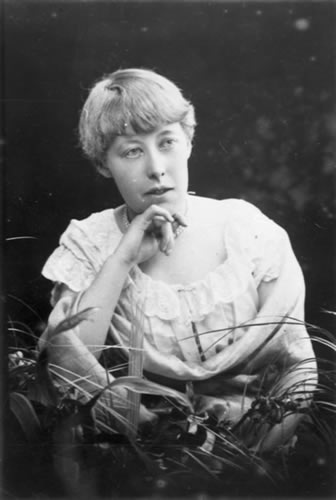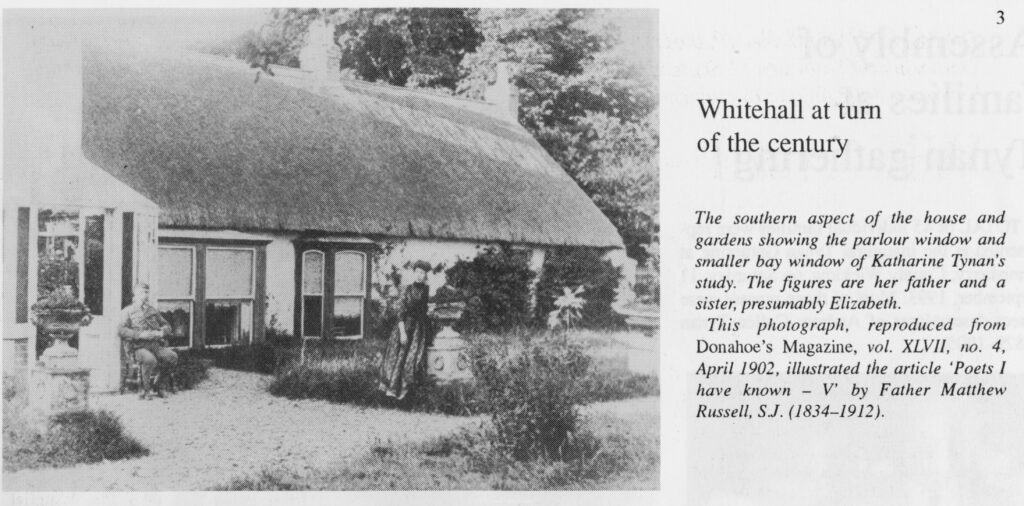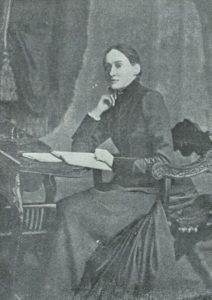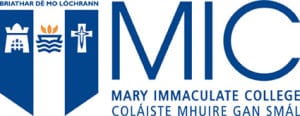Away with the Fairies: Irish Folklore and Fin-De-Siècle Motherhood in Katharine Tynan’s Ballads and Lyrics (1891)
Sadbh Kellett, University of St. Andrews
The Irish writer Katharine Tynan was remarkable in her personal and literary embodiment of the ‘New Woman’. An educated member of Dublin’s Catholic middle-class, Tynan’s formidable literary career resulted in her financial independence, which she maintained alongside her nationalist political activism, all the while playing the part of dedicated wife and mother. As Aurelia L.S. Annat suggests:
Tynan’s literary career continued to support a middle-class identity confirmed by her roles as wife and mother, even as it (paradoxically) liberated her from the normative construct of leisured female domesticity. As if to confound the example of her mother, who she once dismissed as ‘the mid-Victorian woman’ who would stay at home, engrossed by her occupation as mother of 11,[ii] Tynan demonstrated a seemingly limitless capacity for work. This was pointedly represented in her memoirs as unaffected by marriage or motherhood.[iii]

In her Revivalist poetry collection Ballads and Lyrics (1891), Tynan encounters and grapples with aspects of fin-de-siècle feminist thought and the growing social debate over the ‘New Woman’ in Britain and Ireland. In “The Fairy Foster-Mother” Tynan reimagines the Irish folkloric theme of the young woman stolen by the fairies in order to interrogate the role of the ‘Mother’ in nineteenth-century art and literature. This is particularly pertinent given how, as Tina O’Toole suggests, Irish cultural nationalists emphasised hyper-masculinity as a form of colonial rebellion which by proxy “configured a passive femininity that would be of strategic value to the anti-imperialist cause. The dominant representation of Ireland in Revival literature as either mythic goddess or female victim in need of protection made alternative (strong, self-actualized) representations of Irish women difficult to achieve.”[iv]
Tynan explains in a note on the poem how “in Irish fairy-lore the fairies will often steal a mortal woman to nurse their children, as is told here,” and yet Ailie Carroll’s fate in “The Fairy Foster-Mother” lacks the negative connotations Tynan’s use of the verb ‘steal’ implies.[v] Rather, “The Fairy Foster-Mother” highlights Tynan’s preoccupation with the modern woman’s increasing autonomy, and how it coincided with her traditional relation to the domestic and familial sphere. This balance, as Annat points out, was one Tynan had to constantly maintain.
Although Tynan suggests that Ailie has been stolen by the fairies, her narrator’s account is ambivalent if not unreliable, making it possible to read the narrative as Ailie actively choosing to go with the Fairies of her own freewill. Ailie is described by the narrator with a smile “strange and still” and she holds “her eyelids down” which could be suggestive of a trance or alternatively, acceptance; there is no sense of struggle and the verbs are her own.[vi] The narrator, before describing the fairy king in depth, warns Ailie to “Go not into the meadow, Ailie,/ Under the June moon.”[vii] Clearly situated some distance away from the fairies, Ailie disregards the narrator and goes “down by the ruined mill…Into the field forlorn” where there are “fairy rings on the ground” and “fairies circling around.”[viii] Continuing her venture, Ailie then travels “on the fairies’ horse” to the fairy Otherworld where “She will be a fairy’s nurse” to the prince.[ix] The narrator is notable throughout Ailie’s descent into the field because of their incredibly lacklustre attempt at warning Ailie away from the fairies. Each of the narrator’s warnings function as a balladic refrain that increasingly loses its sense of earnestness with each repetition because of the narrator’s simultaneous evocative descriptions of the fairies. The narrator’s eleven-line long description of the Fairy King’s plight is, for example, rebutted with what is by comparison a brief one line aside that “Ailie, come away.” The narrator’s evocations of the fairies and the king’s grief outweigh and suffocate any of their warnings, suggesting that the narrator actually wants Ailie to choose the fairies.[x]
Indeed, the narratorial conflict centres around whether Ailie Carroll will choose to go with the “great King” of the fairies or her husband who “calls [her] home from the cows.”[xi] Critically, both men offer lives in which children are intertwined with Ailie’s identity. The King of the Fairies is described as grieving
With his head in his hands,
For his delicate little lad, Ailie,
Far off in fairy lands.[xii]
The death of the King’s wife has left the Prince bereft of “mother’s love and milk.”[xiii] In the mortal world, Ailie is described more through her domestic duties and success as “Star of home and house,/ To the fine husband and boy,” but again the presence of a child and family are retained. Ailie’s mortal life reflects the Victorian ‘ideal young wife’ which Jan Marsh explains was “in the words of Coventry Patmore’s famous poem, ‘The Angel in the House’…and whose charming modesty, ‘amiable and innocent’, is devoted to connubial and domestic duties, inspiring both husband and children.”[xiv] By will or enchantment, this vision of an identity entrenched in the domestic is markedly rejected by Ailie when she joins the fairies.
Moreover, in Gaelic culture and Irish mythology, the role of fosterage provides an alternative form of parenthood that was integral and important. As Thomas O’Donnell suggests, “fosterage was constituted in two ways, through nutrition and education. Nutrition is most often the breast of the foster mother, offered to the children they foster. While educative fosterage can function alongside this nutritive model, it can also begin later in the child’s life, after it has been weaned.”[xv] “The Fairy Foster-Mother” therefore highlights the ways in which Tynan’s interest in Irish folklore allowed her to explore divergent visions of Irish motherhood. Indeed, Ailie’s maternal role is not so much what is being rejected and left behind, but rather, what is significantly absent from the Fairy King’s strand of narrative is the confinement of Ailie’s identity to ‘Star of home and house.’ Ailie’s dramatic departure on a fairy horse to the Otherworld and the assertion that “She will never come home” echoes this breaking away from an identity solely confined to the domestic sphere.[xvi]

Tynan only upends the Victorian typeset of the ‘Mother’ further in the final stanza’s emphasis on Ailie’s beauty and her sensual “night-black hair like silk…eyes like the sky…And your skin as white as milk.”[xvii] The chaste ‘Angel in the House’ is rejected instead for an eroticism Marsh assigns to the unmarried ‘nubile’ maiden in Tynan’s beloved Pre-Raphaelite art.[xviii] In Tynan’s poem, Ailie Carroll, an established mother and wife, retains elements usually discarded upon entry into marital and familial life. By rejecting the Victorian vision of the ‘Angel in the House’, Tynan appears to be using the female encounter with the supernatural in Irish folklore to interrogate and hint at the possibilities of a fin-de-siècle vision of an Irish motherhood that includes both the traditional aspect of childbearing alongside a more self-governing, self-actualised vision of the ‘New Woman’. Tynan’s interrogation and subversion of the different kinds of roles a woman was expected to inhabit in Victorian society and Revival literature reveal her own ambivalence towards the traditional boundaries within these roles, boundaries which her own fellow cultural nationalists risked setting, and boundaries which she would push within her own life.
Sadbh Kellett is an Irish PhD candidate at the University of St. Andrews in Scotland researching Gaelic mythology in modern Irish and Scottish literature. She is also a published writer, her recent work appearing in anthologies and journals such as Sonder, Poems from Pandemia, and Strange Times. Twitter Account: @SadbhKellett.
Would you like to submit a blogpost? Check out our guidelines here or email Dr Deirdre Flynn.
[i] Billinghurst via Commonshelper, Image of Katharine Tynan, “Twigler” via Wikipedia Commons, https://commons.wikimedia.org/wiki/File:Tynan1.jpg, (Accessed 19th March 2021).
[ii] Katharine Tynan, Twenty-Five Years: Reminiscences (London, 1913), 27, as found in Aurelia L.S. Annat, “Class, Nation, Gender and Self: Katharine Tynan and the Construction of Political Identities, 1880–1930,” Politics, Society and the Middle Class in Modern Ireland, ed. F. Lane, (London: Palgrave Macmillan, 2010), https://doi.org/10.1057/9780230273917_11, 197.
[iii] Annat, “Class, Nation, Gender and Self,” 197.
[iv] Tina O’ Toole, The Irish New Woman, (New York: Palgrave Macmillan, 2013), 8-9.
[v] Katharine Tynan, Ballads and Lyrics, (London: Kegan Paul, Trench, Trübner & Co., 1891), https://books.google.ie/books?id=lltLAAAAMAAJ&pg=PP17&source=gbs_selected_pages&cad=2#v=onepage&q&f=false, 152.
[vi] Tynan, Ballads and Lyrics, 75.
[vii] Tynan, 74.
[viii] Tynan, 75.
[ix] Tynan, 75.
[x] Tynan, 74.
[xi] Tynan, 74-5.
[xii] Tynan, 74.
[xiii] Tynan, 74.
[xiv] Jan Marsh, Pre-Raphaelite Women, (London: Guild Publishing, 1987), 61.
[xv] Thomas O’ Donnell, Fosterage in Medieval Ireland, (Amsterdam: Amsterdam University Press, 2020), https://doi-org.ezproxy.st-andrews.ac.uk/10.1515/9789048541973, 21.
[xvi] Tynan, Ballads and Lyrics, 75.
[xvii] Tynan, 76.
[xviii] Marsh, Pre-Raphaelite Women, 45. Katharine Tynan, Shamrocks, (London: Kegan, Paul, Trench & Co., 1887), https://books.google.ie/books?id=eWs9AQAAIAAJ&printsec=frontcover&source=gbs_ge_summary_r&cad=0#v=onepage&q&f=false. Tynan dedicated her 1887 poetry collection “with homage, and as a thanksgiving” to the Rossettis.



